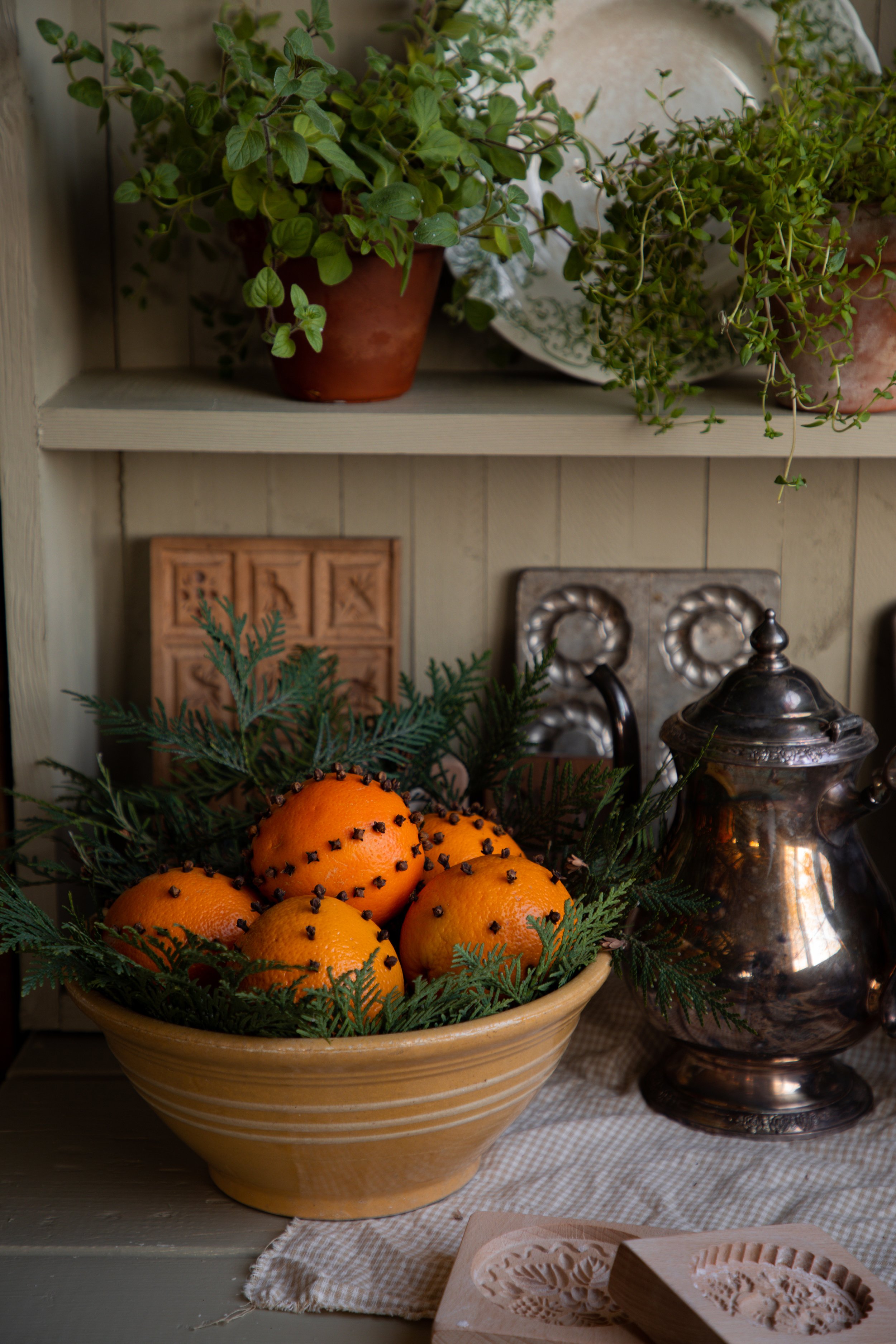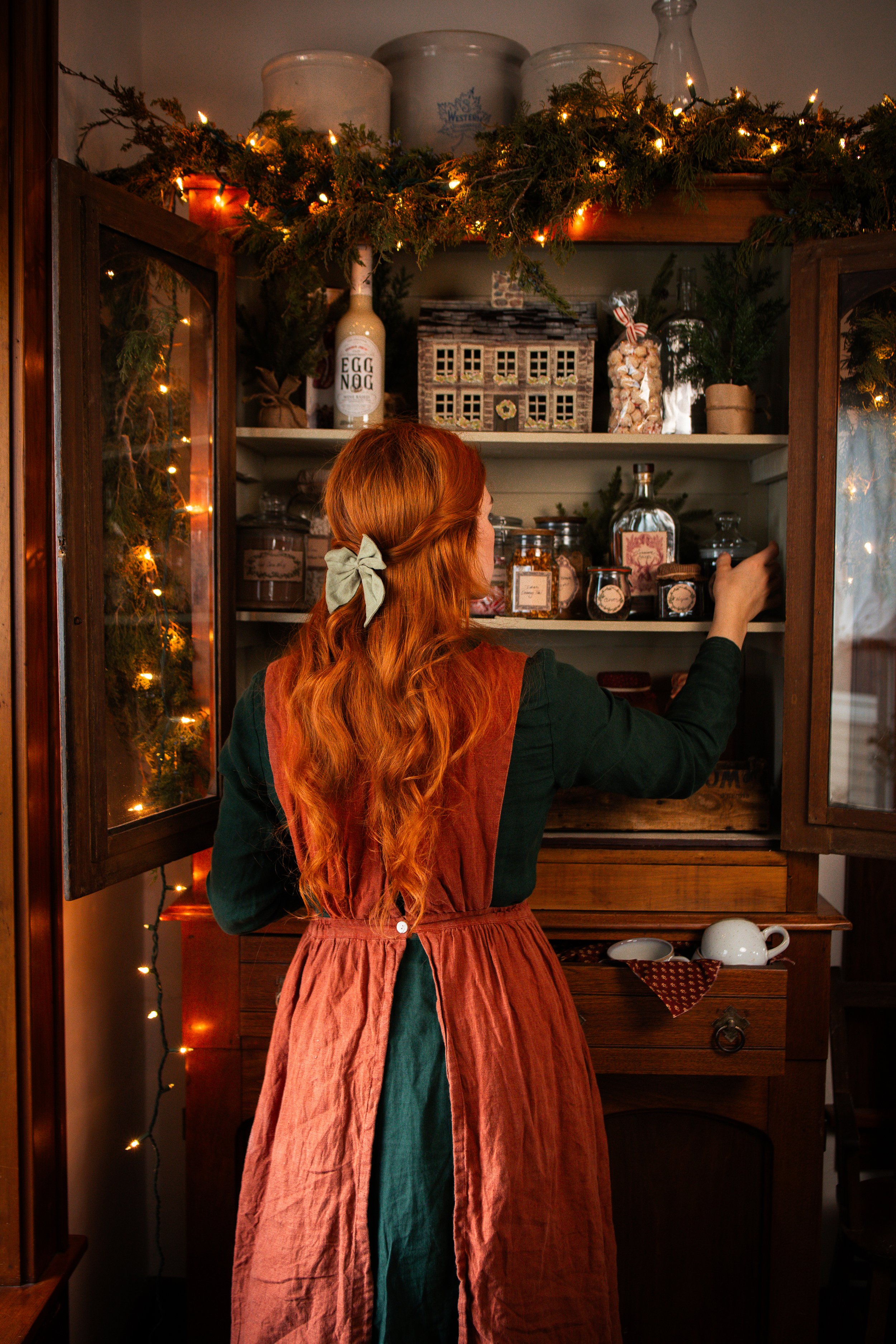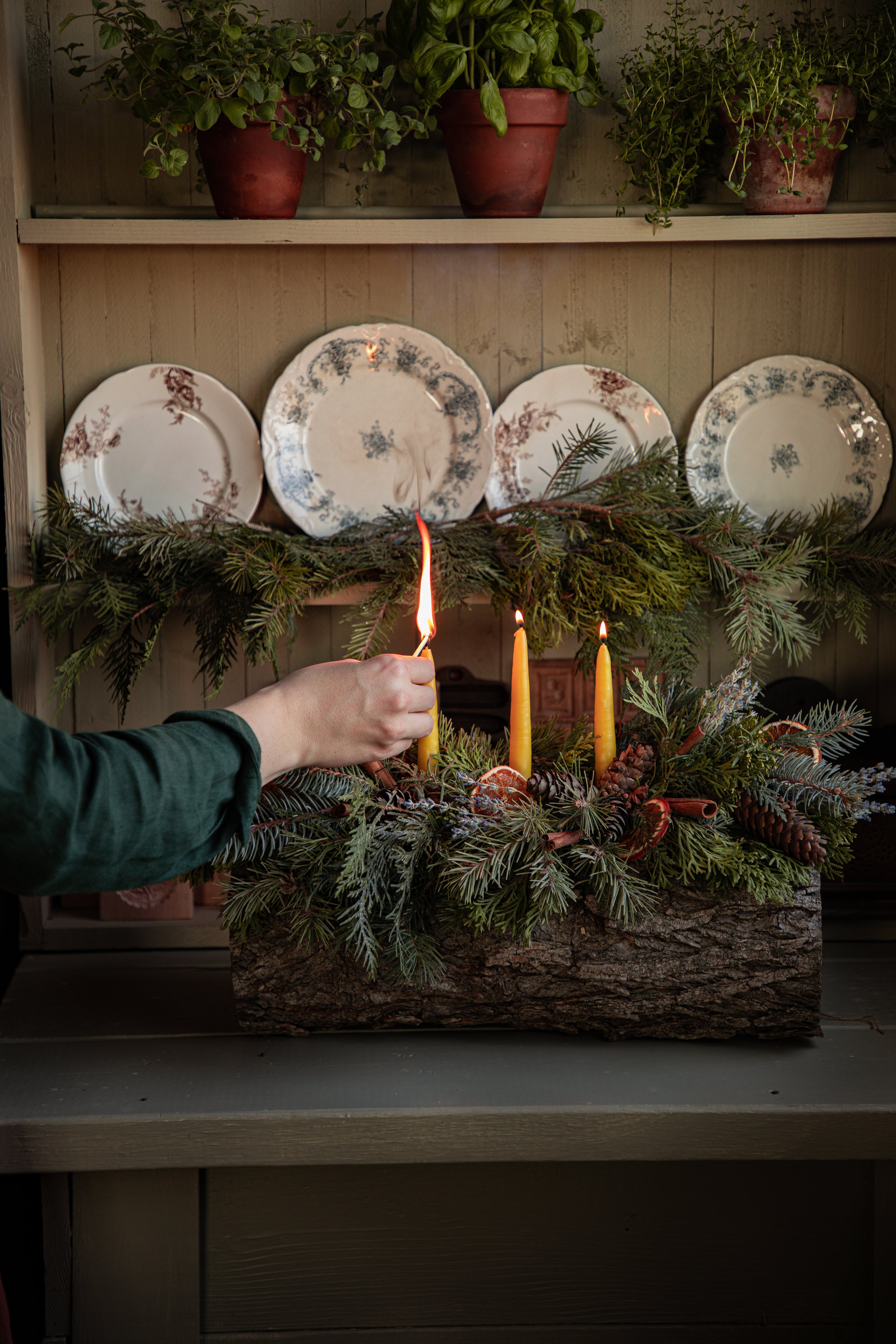How to Dry Orange Slices & Make Pomanders
Hello, dear reader!
We hope that you had a lovely Thanksgiving celebration with your loved ones yesterday, if you celebrate. We enjoyed a slow day with our household, watching Christmas films and cooking all day long. I spent almost all day in the kitchen, going slowly about each recipe, and trying my best not to reference any of my receipts. It felt nice to cook just for fun, without the pressure of entertaining guests or that I had to have the meal ready at a certain time. We usually like to eat Thanksgiving dinner in mid to late afternoon, but yesterday I felt that a late evening supper would be better. I actually enjoyed it a lot more, and we were able to munch on a healthy charcuterie spread and baked brie in the afternoon instead.
But now that those celebrations are over, we can focus on the Christmas season! Our first fun piece of content to share with you is the art of making pomanders. Have you made this medieval craft before?
what are pomanders?
Pomanders have an ancient history, though it relates to the ever present historical theme of trying to purify the air and bring about pleasant scents. I have found that most historical inspired crafts that we create on our blog always tend to lean towards aromatherapy, though I personally struggle with strong scents. Perhaps that is why I like to make my own candles and simmer pots and things… Strong, artificial scents are overwhelming to me and often make me feel sick. I have never been able to go into Hobby Lobby for very long as the strong eucalyptus scent gives me an instant headache and upset stomach. I still remember complaining about this to my mom as a child!
Pomanders, or pomme d-ambre, were created in the thirteenth century or earlier. They are named by the French, which translates to “apple of amber” and were created to perfume the air. Of course, this could have been any orb shaped potpourri, as they were often carried around or worn around the neck. This was also a practice for sachets or herbal charms or lockets. The aroma of the potpourri was thought to not only cleanse the air and scent the wearer, but certain herbs or floral were believed to bring about good luck, wealth, prosperity, beauty, and love.
The orange pomander that we see often around Christmas time today is a modern tradition that has been passed down, thought they can be made with any citrus fruit! Oranges have a long history at Christmas themselves. They are believed to be the origin of Santa Claus, or Saint Nicholas, leaving a “bag of gold” in stockings of children. The orange is meant to represent the bag of gold that you get in your stocking. Of course, as we know in times before now, citrus fruits were difficult to obtain in colder regions, so an orange in your stocking would have been a real treat that you did not get very often!
As time moved on and people did not believe they needed to protect themselves from the “bad air” around them, pomanders moved into the home to help freshen up the atmosphere. This is the same practice that we still do today like lighting a scented candle or having an open bowl of potpourri.
The clove studded orange is a Victorian Christmas tradition. Many people associate this image with the American colonial period, but it would have been wasteful at that time to use the orange for decor rather than to eat. Many of the holiday traditions that we continue today come from the nineteenth century!
how to dry oranges:
Preheat the oven to its lowest temperature, or around 180° F. Prepare a few baking sheets and set them aside.
Slice oranges to your desired thickness. The thicker the orange slice, the longer it will take to dry out. The thinner the slice, the more chance you risk of burning it! We like our slices to be about 1/4 to 1/2-inch thick. Use a sharp knife to make more precise cuts.
Lay the orange slices in an even layer on the baking sheets. Bake them until dry, flipping the slices about once or twice every hour. This may take several hours, usually around 3 to 4.
The oranges are dried when the rind is fully hardened, and the fruit flesh is no longer juicy but slightly sticky. Once they have reached this stage, it is best to lay them out on wire cooling racks to finish air drying. They will eventually become hard and glass-like. We have found that this works better than fully drying in the oven!
Once the oranges are dried, use them in your decor! If they are hanging in a garland with enough space in between slices or on the Christmas tree, they will continue to dry out.
Orange slices can last for years, if fully dried with enough air circulation. They will begin to discolor over time. Simply store in an airtight container in a dark, dry space, such as a pantry.
Dried orange slices are wonderful for decor as well as crafts and even some cooking or baking recipes!
how to make orange pomanders:
Use firm, fresh oranges to make your pomanders. The softer the orange, the more likely it may be to rot. You will also need to purchase whole cloves.
Poke the stems of the dried cloves into the flesh of the orange in any pattern that you wish. If you have sensitive fingertips, you can poke holes with a toothpick before sticking in the cloves.
There are many different designs that you can make. You can make lines, diamonds, circles, starts, or simply stick them all over like little polka dots! To create a highly scented pomander, try covering the entire orange with cloves. You can also roll the orange in dried spices!
Pomanders can last for years, if preserved correctly. The idea is to dry them out over time. The way we have ours displayed in a bowl does not work well, at least for a long period of time, as the oranges will begin to mold. To dry them out, place them on a shelf and turn daily. You can also place them into a paper bag and store them for several weeks at a time, turning and checking routinely. The cloves are a natural preserving agent and will begin to draw out the juices from the orange, fully drying it and turning it into a dried rind. Rolling your orange in dried cinnamon helps to keep mold from growing, too! Kind of cool!
Whatever Christmas traditions you believe in, making pomanders is a fun holiday craft to do while you watch the snow fall outside. I love the old-fashioned look they bring to our home this time of year. I feel as if I stepped into a Charles Dickens story with the beautiful clove designs and fresh greens. We love an old-fashioned Christmas!
I hope you have a lot of fun making your dried oranges and pomanders.
xoxo Kayla















